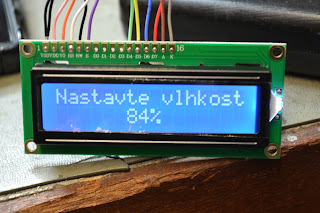... until the other day when the camera started to play up....
Hmmmm, not ideal.
If you put some pressure on the phone, around where the camera lens is, it would come back to life for a few seconds, sometimes with some bizarre effects...
.. not ideal at all....
I thought I could live without it, but after a week or so, I realised how much I used it for taking quick pictures of wiring etc ... I decided
I'd need to investigate, so I googled disassembly instructions, but couldn't find a video or instructions that had the same layout as my phone.
I removed the back of the phone and quickly diagnosed that the camera module itself was at fault (I was hoping some connector had just come lose, no such luck).
A new camera module was sourced from eBay for a princely some of £13.95 delivered... I ordered a replacement adhesive gasket kit as well (£2.45)
So here's how it's done...
 Switch the phone off, and gently heat up the back of the phone with the wife's hairdryer or a heat gun set to low.
Switch the phone off, and gently heat up the back of the phone with the wife's hairdryer or a heat gun set to low. Get a sucker and a prying tool and gently remove the back. If it doesn't come away easily, heat it up a bit more. Don't risk bending the metal back....
Get a sucker and a prying tool and gently remove the back. If it doesn't come away easily, heat it up a bit more. Don't risk bending the metal back.... Right, that's good.
Right, that's good.
Un-latch the NFC aerial connector at the end shown ....
 ... and lift it out of the way.
... and lift it out of the way.
Unscrew the small pozi screws retaining the aerial module .....

... remove it, and place it to one side.

Undo all the screws on the plastic frame .....
 ... gently work a small insulated tool (this is a ceramic screwdriver) under the flash LED (it's retained with a small blob of adhesive) ...
... gently work a small insulated tool (this is a ceramic screwdriver) under the flash LED (it's retained with a small blob of adhesive) ... ... and hinge it out of the way.
... and hinge it out of the way.
Carefully prize the plastic frame out. The flash LED should slide through the frame.

Excellent.

Just for piece of mind, disconnect the battery.

Now prize up the camera connector....

... and remove the camera.
 Worryingly, the new camera didn't come in ESD safe packaging....
Worryingly, the new camera didn't come in ESD safe packaging....
... and was supplied with some sort of rubber gasket, which the original camera didn't have, I just slipped it off...

Some careful bending of the camera's ribbon cable, and it all fits in, and the connector is pushed home.
Now put the phone back together again. When fitting the frame make sure the flash pokes back through, and the NFC connector doesn't get trapped.
Replace the adhesive gasket, and replace the back...
 ... and go and take some photo's !
... and go and take some photo's !Got my thumb in as usual .... ;)













